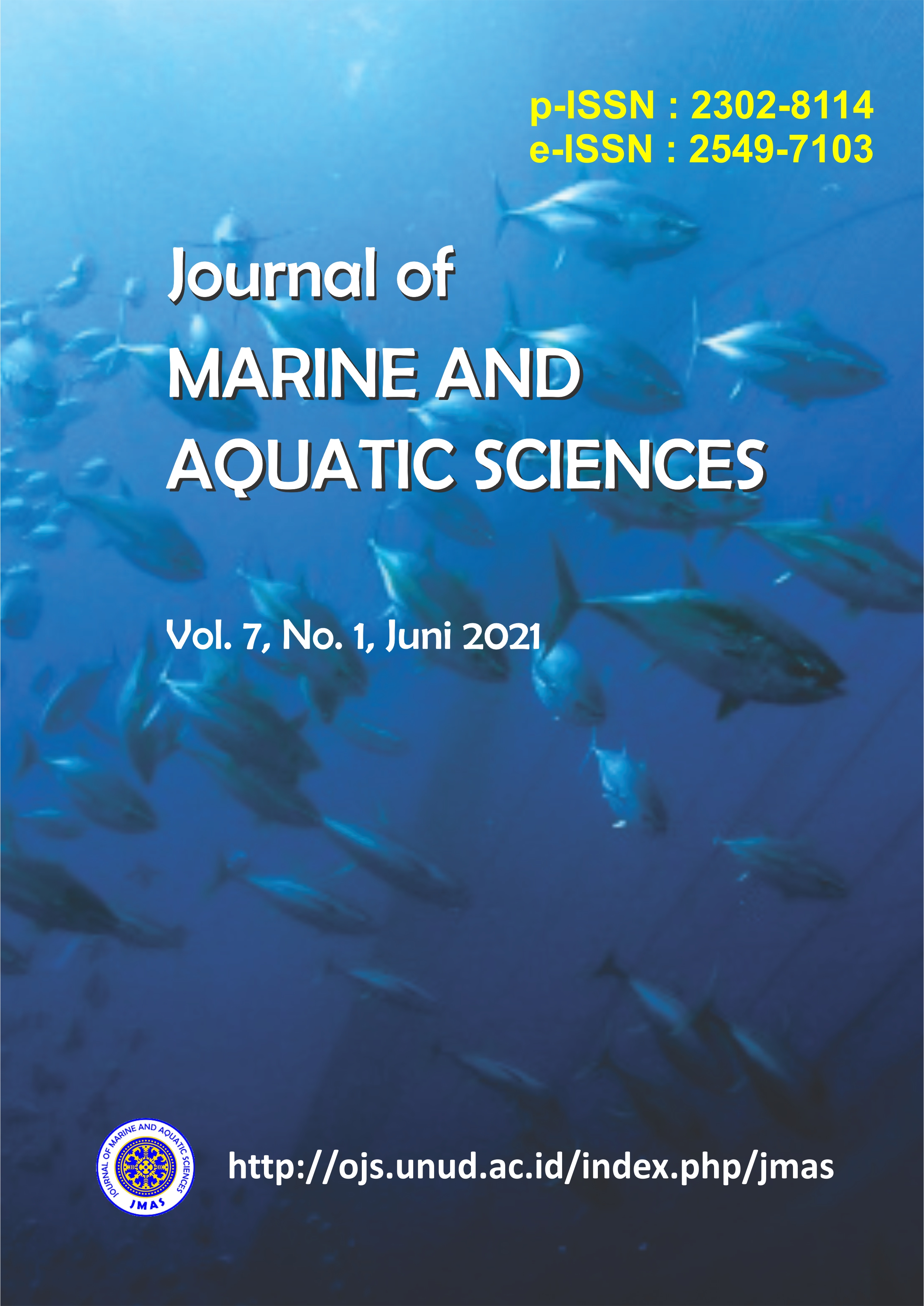Analisis Sebaran Total Suspended Solid (TSS) Berdasarkan Citra Landsat 8 Menggunakan Tiga Algoritma Berbeda Di Perairan Teluk Benoa, Bali
Abstract
Total suspended solid is a suspended solid that causes turbidity in the waters. These particles cannot settle directly on the bottom of the water. TSS size and weight are smaller than sediment. TSS concentration if too high will inhibit the penetration of light into the water and result in disruption of photosynthesis. The number of human activities around the waters of Benoa Bay can produce pollutant waste into the waters which can cause negative impacts on the conditions of marine life. This TSS value is one part that plays a role in determining the environmental quality of a waters. Seeing the input from the rivers which empties into Benoa Bay, the need for research in the Benoa Bay area is related to total suspended solids. Technological developments, especially in remote sensing, make the implementation of mapping the distribution of TSS concentrations efficient. The method in this study used Landsat 8 satellite images and in situ data. This research was conducted in May 2018. The research location consisted of 30 points by purposive sampling. The TSS concentration value in situ has an average concentration of 301.65 mg / L. Middle waters have greater concentration because this is due to the effects of tides. TSS concentration values from images can be calculated using the Budhiman, Guzman and Parvati algorithms. The results of the calculation of the three algorithms have an error value above 30%. This may be due to differences in water conditions which result in differences in concentration from the insitu value and the value of satellite images in the waters of Benoa Bay.
Downloads

This work is licensed under a Creative Commons Attribution 3.0 International License.
Copyright 2012 - 2023 Journal of Marine and Aquatic Sciences (JMAS)
Published by Fakultas Kelautan dan Perikanan Universitas Udayana, Denpasar, Bali, Indonesia
JMAS (p-ISSN 2302-8114; e-ISSN 2549-7103)


